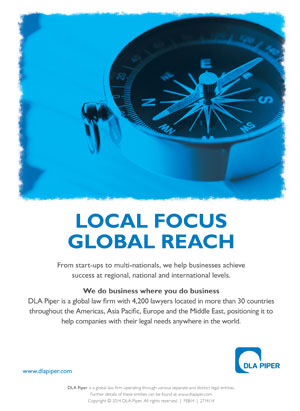 The number of cross-border M&A transactions globally is on the rise, close to its post-crisis high. Powerful macroeconomic and political forces continue to provide impetus to globalization, and companies around the world are driven by their strategies to move into new markets and jurisdictions.
The number of cross-border M&A transactions globally is on the rise, close to its post-crisis high. Powerful macroeconomic and political forces continue to provide impetus to globalization, and companies around the world are driven by their strategies to move into new markets and jurisdictions.
To explore this trend, working with FT Remark, Baker & McKenzie surveyed 350 executives who have recently undertaken cross-border deals and identified five significant motivating factors for M&A, the challenges each generates, and crucially, how to overcome them.
Tim Gee, Baker & McKenzie’s global head of M&A, said: “The fact that almost 90 percent of respondents describe their recent deals as successful, with more than a third of executives planning a further deal in the next two years, tells us cross-border M&A is a key tool in the implementation of business strategy. We chose to examine this trend through the lens of the principal strategic motivation behind each acquisition. Why a deal happens plays a large part in shaping the nature of the transaction, and the issues that management and their advisors face. Understanding these issues from the outset makes for better, more successful deals.”
The Five Strategic Motivations
- Building scale through the acquisition of customers or distribution networks. This raises particular issues around the credibility of revenue streams, antitrust and competition and the complex process of retaining customers post acquisition.
- Acquiring intellectual property. Such deals can frequently raise challenges related to ownership, data and brand protection and the need to rationalize and consolidate structures and asset ownership in the post-merger phase.
- Adding skills and capabilities through the acquisition of human capital. This often requires careful planning to address complex cultural and political considerations as well as the development of policies and incentive programs to retain staff.
- Gaining access to natural resources. Almost invariably such transactions raise questions of politics, regulation/controls, and social and environmental impact.
- Building a company’s strength through the purchase of industrial assets. This is often associated with complex tax, human resources and compliance issues.
Key Findings
- Cross-border M&A is increasing. During the first quarter of 2014, USD263.1 billion worth of cross-border deals took place, close to a post-crisis high.
- 86 percent of respondents deem their last cross-border deal to be successful.
- 34 percent say they plan to undertake another cross-border deal in the next two years.
- Access to customers (34 percent) is the most important motivation for the cross-border deals conducted by respondents in our survey.
- This is followed by access to intellectual property (25 percent), access to industrial assets (21 percent), access to natural resources (12 percent) and access to human capital (8 percent).
- The desire to access intellectual property is the prime motivation for companies making acquisitions in Japan, North America and Europe.
- Human capital is very often the second most important consideration for companies undertaking cross-border deals.
- The desire to acquire industrial assets is a prominent motivation for cross-border deals in all markets, with the exception of Africa.
The Going Global Strategy and Execution in Cross-Border M&A report is based on research and data from FT Remark and Mergermarket, leaders in M&A market research, combined with the experience of Baker & McKenzie, which advises on more cross-border M&A transactions than any other law firm. The report contains a foundation of data and analysis and a mix of quotes and case studies based upon the experience of cross-border acquisitions from the companies involved. Baker & McKenzie partners from our offices around the world contribute practical advice on identifying and addressing the challenges of executing cross-border transactions.







